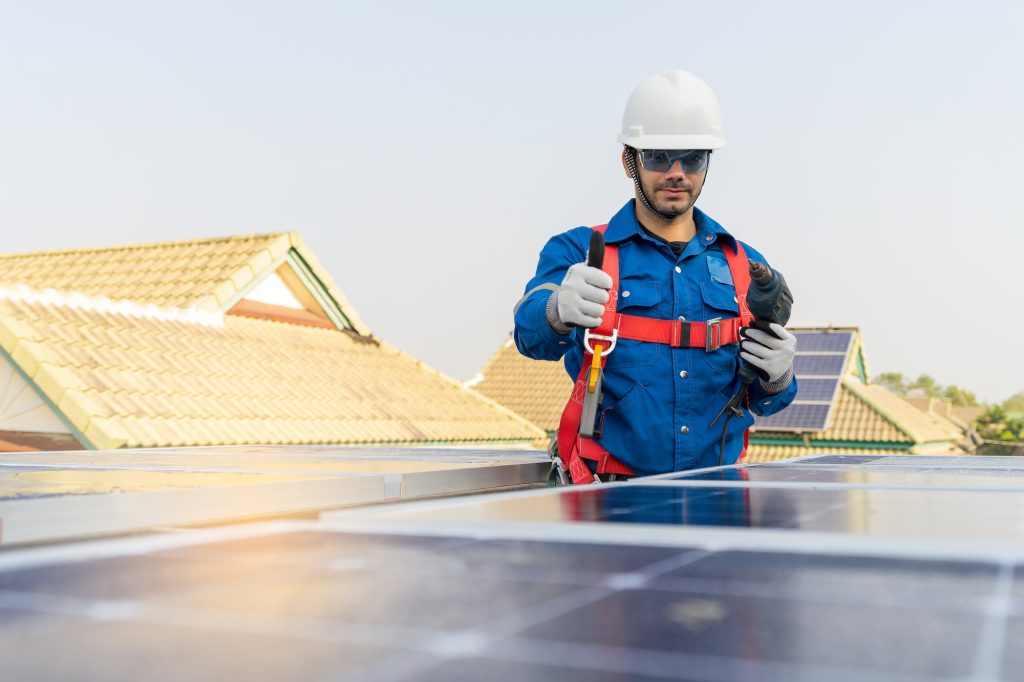As homeowners become increasingly conscious of their environmental impact, green roofing has emerged as a popular and sustainable solution for eco-friendly homes. Green roofing, also known as living roofs or vegetative roofs, involves the installation of vegetation and greenery on rooftops, providing a range of environmental, economic, and aesthetic benefits. Let’s explore how green roofing can contribute to sustainability and enhance the overall eco-friendliness of your home.
1. Environmental Benefits:
Green roofing offers numerous environmental benefits that contribute to a healthier and more sustainable living environment. Some of the key environmental benefits include:
- Improved Air Quality: Green roofs act as natural air filters, absorbing carbon dioxide and other pollutants from the air and releasing oxygen. The vegetation and soil on green roofs also help trap airborne particles, reducing air pollution and improving overall air quality.
- Stormwater Management: Green roofs absorb and retain rainwater, reducing stormwater runoff and alleviating pressure on stormwater management systems. By absorbing and filtering rainwater, green roofs help prevent flooding, erosion, and water pollution, promoting more sustainable water management practices.
- Urban Heat Island Mitigation: Green roofs help mitigate the urban heat island effect by absorbing solar radiation and providing natural cooling through evapotranspiration. By reducing surface temperatures and lowering ambient temperatures in urban areas, green roofs help combat heat-related health risks and reduce energy consumption for cooling.
2. Energy Efficiency:
Green roofs can significantly improve the energy efficiency of buildings by providing natural insulation and reducing heat gain and loss through the roof. Some of the key energy efficiency benefits of green roofing include:
- Thermal Insulation: The layers of soil, vegetation, and vegetation provide natural insulation, reducing heat transfer through the roof and improving thermal comfort indoors. Green roofs can help regulate indoor temperatures year-round, reducing the need for heating and cooling and lowering energy consumption.
- Cooling Effect: The evapotranspiration process on green roofs helps cool the surrounding air, reducing the need for air conditioning in hot weather. By reducing cooling demand and peak energy loads, green roofs can lower energy bills and decrease greenhouse gas emissions associated with energy production.
3. Biodiversity and Habitat Creation:
Green roofs provide valuable habitat and green space for native plants, insects, birds, and other wildlife in urban environments. By creating new habitats and promoting biodiversity, green roofs contribute to ecosystem resilience and support local wildlife populations. Green roofs also help connect urban residents with nature, fostering a greater appreciation for biodiversity and environmental conservation.
4. Aesthetic and Recreational Benefits:
In addition to their environmental and economic benefits, green roofs offer aesthetic and recreational advantages that enhance the quality of life for building occupants and surrounding communities. Some of the key aesthetic and recreational benefits of green roofing include:
- Visual Appeal: Green roofs add visual interest and beauty to buildings and urban landscapes, transforming rooftops into vibrant green spaces that complement the surrounding environment. The lush vegetation, colorful flowers, and seasonal changes of green roofs create visually appealing and dynamic landscapes that enhance the overall aesthetic of buildings and neighborhoods.
- Outdoor Space: Green roofs provide valuable outdoor space for relaxation, recreation, and socializing, offering building occupants and community members a peaceful retreat amidst the urban environment. Whether used for rooftop gardens, outdoor seating areas, or recreational activities, green roofs offer opportunities for connection with nature and enjoyment of the outdoors.
- Noise Reduction: The vegetation and soil on green roofs help absorb and dampen sound, reducing noise pollution from traffic, construction, and other sources. Green roofs can create quieter and more tranquil indoor environments, promoting relaxation and well-being for building occupants.
In conclusion, green roofing offers a range of environmental, economic, and social benefits that make it an attractive and sustainable solution for eco-friendly homes. By integrating green roofs into our built environment, we can contribute to a healthier, more resilient, and more sustainable future for generations to come. If you’re interested in exploring green roofing options for your home, contact a professional roofing contractor with expertise in green roof design and installation to discuss the possibilities for greening your roof and making your home more environmentally friendly.

